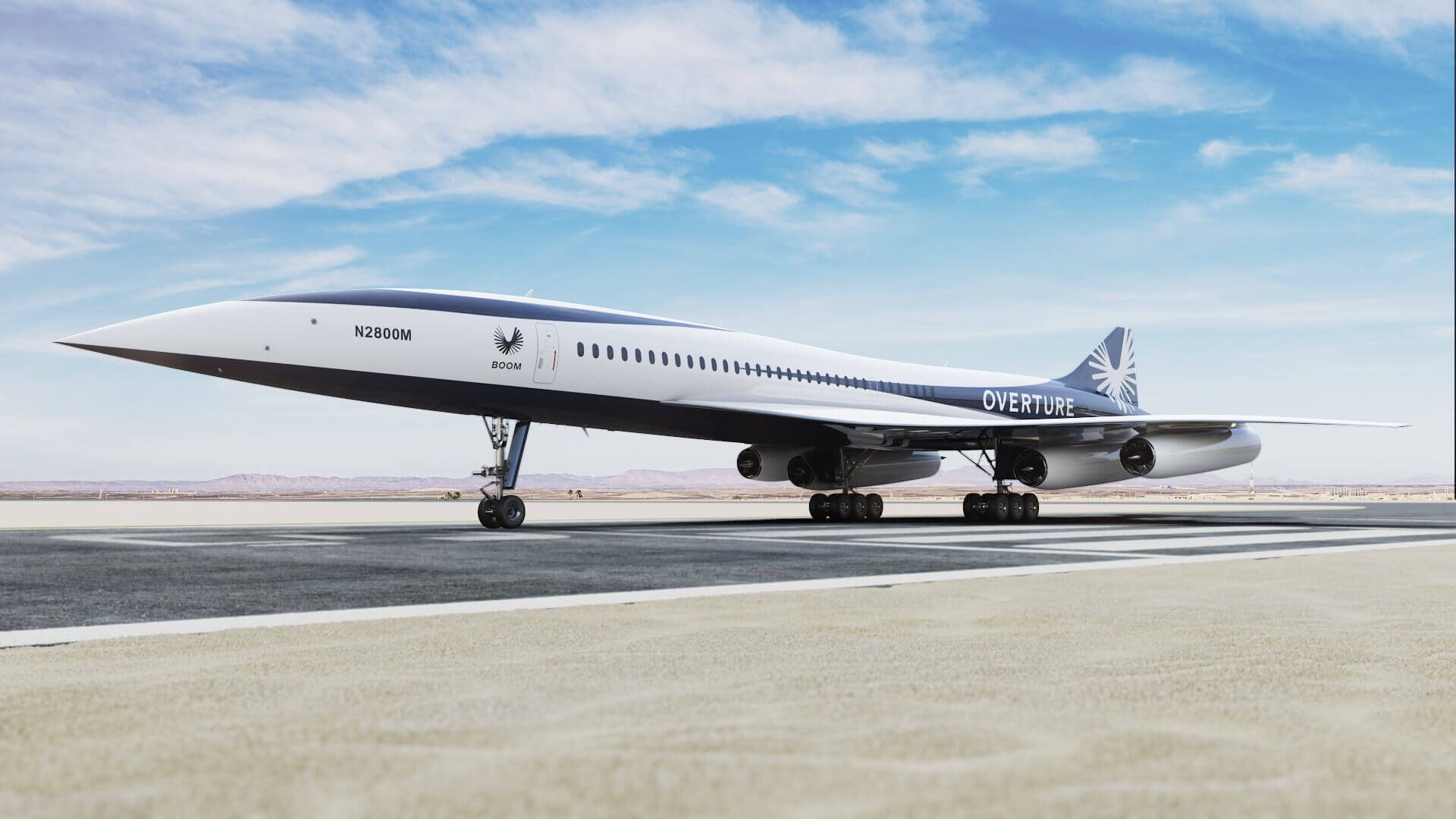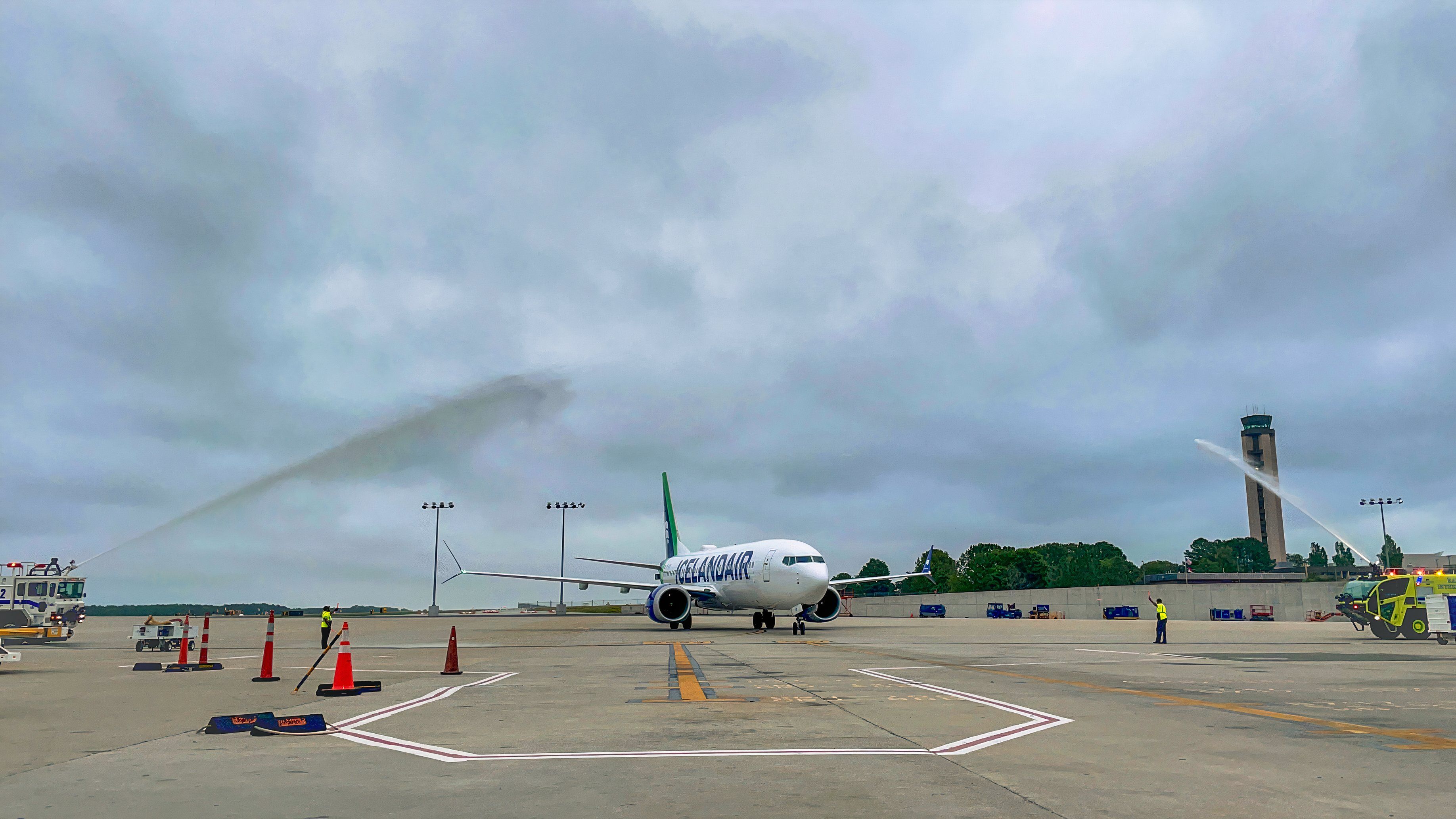Summary
- North Carolina’s airports are experiencing significant growth with new carriers and expanded services.
- Breeze Airways began service to Coastal Carolina Regional Airport, and Concord-Padgett Regional Airport welcomed Avelo Airlines.
- Charlotte Douglas International Airport broke its all-time passenger record, and Raleigh-Durham International Airport welcomed its 10th international carrier.
This summer has been a monumental one for aviation in North Carolina. Boom Supersonic launched its Overture Superfactory in Greensboro, where it will produce the first passenger supersonic jets since the Concorde. Across the runway, HondaJet is making moves in the private aviation section.
Passengers are also benefiting from a renewed interest in the state. Regional airports Concord-Padgett (USA) and Coastal Carolina (EWN) both welcomed a second scheduled carrier, while international airlines flock to the state capital’s Raleigh-Durham International Airport (RDU).
First in supersonic flight?
License plates in the state read “First In Flight,” with a picture of the Wright Brother’s flyer taking to the skies over Kitty Hawk. One hundred twenty-one years later, North Carolina is again experiencing a resurgence in aviation as aircraft manufacturers and airlines take an interest in the state. Last month, Boom Supersonic opened its Overture Superfactory on the grounds of Piedmont Triad International Airport (GSO), which serves the Greensboro, Winston Salem, and High Point ‘Triad’. It is the second aircraft manufactured to be based on the campus after HondaJet and plans to employ more than 2,400 people in the local area.

Related
Boom Supersonic Unveils Overture Superfactory In North Carolina
The facility will produce the nation’s first supersonic passenger airliner in the ‘Birthplace of Aviation,’ bringing thousands of jobs to the region.
The Overture aircraft already has preorders from carriers like American and United Airlines and is set to become the first civilian supersonic aircraft since the Concorde and the first to be produced in the United States. Much like the Wright Brothers, Boom Supersonic CEO Blake Scholl grew up in Ohio but came to North Carolina to make history. Speaking at the Superfactory opening last month, Scholl highlighted just how significant this investment is for the community:
“We have found here what the Wright Brothers found. A passionate community as excited about the supersonic future of flight as we are at Boom, up and ready to join arms to create that future together.
“Indeed, what we’re building here in Greensboro has significance well outside of the triad. What we’re doing here will have an impact nationally, no, even globally.”
Photo: Boom Supersonic
It is not only aviation companies that are coming to North Carolina. Airlines are also showering the state with nonstop flights to a host of new destinations.
Twice as nice for two airports
The state is often referred to as the “Birthplace of Aviation” thanks to the historic flights by the Wright Brothers at Kitty Hawk in December 1903. While far from the first people to fly, the two men were the first to record a successful powered, controlled, and sustained flight in a heavier-than-air aircraft. Significantly, the airport serving Kitty Hawk and the Outer Banks is the latest in the state to receive a new carrier. Breeze Airways revealed it would begin service to Coastal Carolina Regional Airport (EWN) in New Bern earlier this year, making it the 50th destination announced by the carrier.
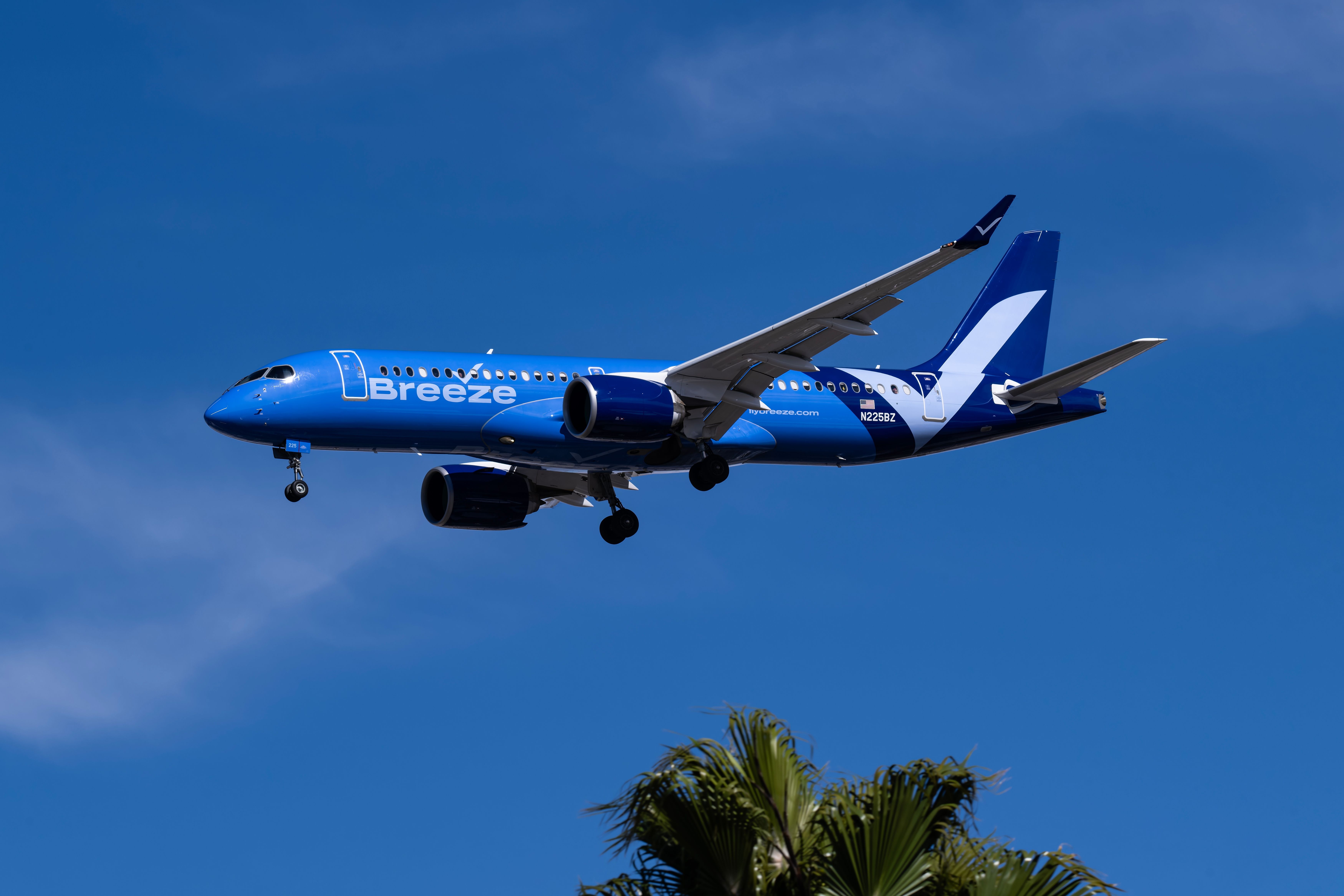
Related
New Uniforms and New Bern: Breeze Airways Announces 50th Destination
The airline will begin service to Coastal Carolina Regional Airport in May as it reveals new uniforms and inflight WiFi options.
The arrival of Breeze Airways this summer, with flights to Orlando and Hartford, doubled the number of carriers at the airport, which is also served by six daily flights to Charlotte (CLT) on American Airlines. The airport just completed a terminal expansion, which increased the size of the facility by 20% with the addition of one boarding gate, two aircraft passenger boarding bridges, a larger TSA security screening checkpoint area, new restrooms, and an area for service animals. Speaking exclusively to Simple Flying, Airport Director Andrew Shorter highlighted the airport’s growth and connection to aviation history:
“As we reflect on the success of the first half of 2024, one of our highlights was announcing the addition of Breeze Airways service, while simultaneously announcing that American Airlines was increasing their number of daily flights. This increase in air service capacity further enhances our position as the gateway, not only to Historic New Bern, but also to the Outer Banks and the place where powered flight began.
“In addition, we are proud to have completed the first phase of our terminal expansion project and we are excited to continue increasing connectivity while elevating the experience for travelers to and from this historic coastal area.”
Another regional airport also welcomed a second carrier last month. Often referred to as “NASCAR’s Airport,” thanks to its proximity to the Charlotte Motor Speedway, Concord-Padgett Regional Airport (USA) welcomed Avelo Airlines with service to New Haven, Connecticut. Already served by Allegiant Air, the airport serves the greater Charlotte area and provides an alternative to the state’s busiest airport and American Airlines’ hub at the nearby Charlotte-Douglas International Airport (CLT).
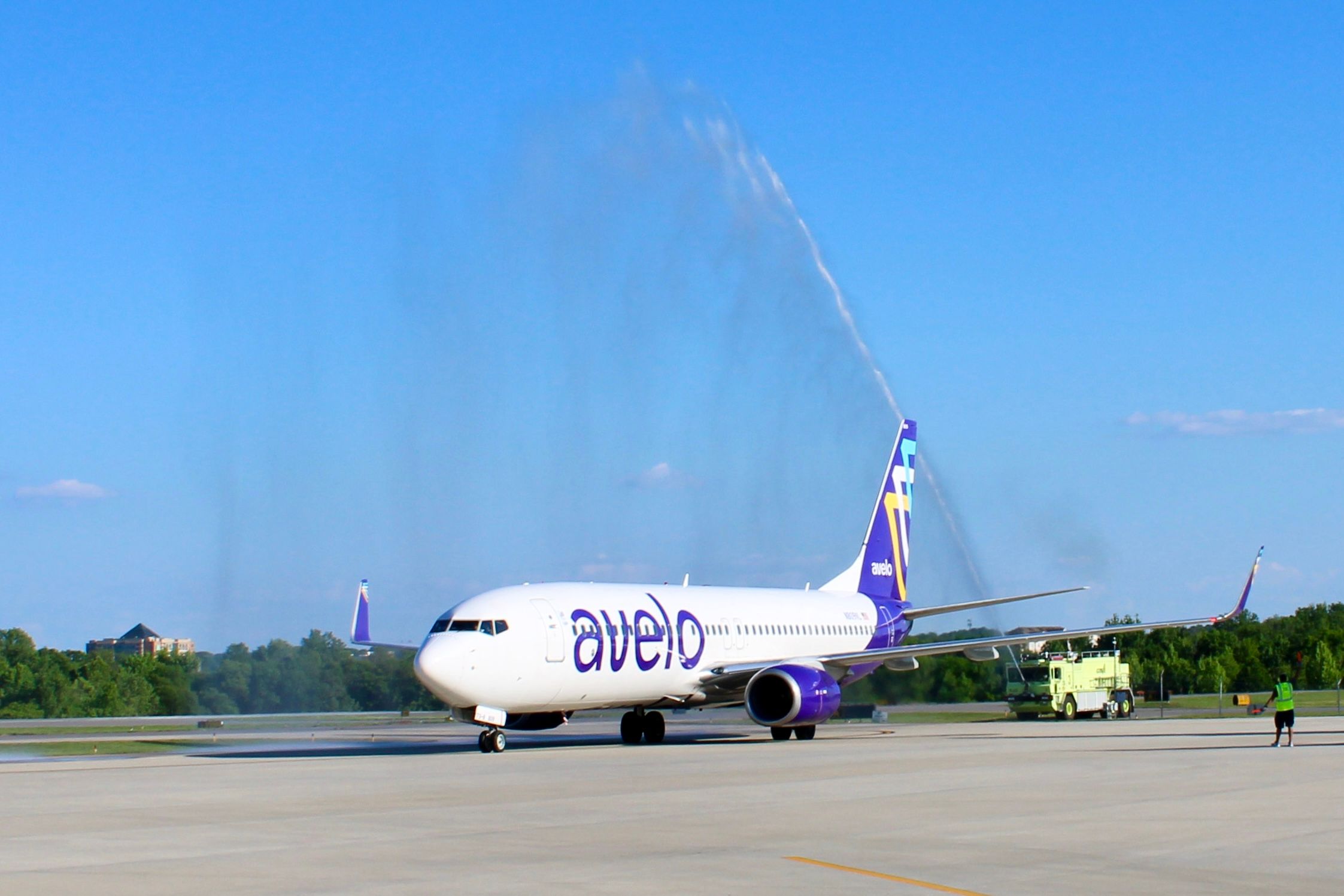
Related
Avelo Arrives At North Carolina’s Most Patriotic Airport: Concord-Padgett
Also known as NASCAR’s Airport due to its proximity to the Charlotte Motor Speedway, Avelo joins Allegiant Air at the airport bearing the code “USA.”
Speaking to Simple Flying at the launch event, local area residents expressed excitement that the airport is growing the number of nonstop destinations and praised its usability and convenience. Allegiant currently serves four destinations in Florida from USA, and Avelo is reportedly considering expanding services to include Florida and Philadelphia via Wilmington, Delaware (ILG).
Beach days and mountain getaways
Speaking of Wilmington, albeit a different one, the state’s Wilmington International Airport (ILM) recently made Newsweek’s 2024 Readers’ Choice list of Best Small Airports. Serving as a gateway to the state’s Atlantic coast and the Carolina Beaches, ILM is served by American, Avelo, Delta, United, and Sun Country. All six carriers grew at the airport last year, with every month in 2024 reporting larger numbers than in previous years, and the airport is on track to break the 2023 record for passenger demand. When reached for this story by Simple Flying, a spokesperson for the airport noted how rapidly it has been expanding:
“We are proud of the growth at ILM which has led us to be one of the fastest growing airports in NC and across the country (based on increased seat capacity). To accommodate this growing demand, and continue to provide the needed facilities and infrastructure, ILM has embarked upon a five-year $185 million capital plan.”
Up the coast in Jacksonville, Albert J Ellis Airport (OAJ) is also growing. The primary airport for Marine Corps Base Camp Lejeune and surrounding areas, OAJ has multiple daily flights to Charlotte and Atlanta and a robust general aviation presence. Speaking to Simple Flying, an airport representative confirmed that the local County Commissioners just approved a contract that will ultimately lead to a highway relocation and runway extension at OAJ from 7100 feet to 8000 feet. A new facility adjacent to the fire station that will handle vehicle maintenance, storage, and snow operations is also in the works.
All the way across the state, the primary airport serving western North Carolina and The Blue Ridge Mountains is working on a brand-new terminal. Last August, Asheville Regional Airport (AVL) broke ground on AVL Forward, a $400 million infrastructure project that will result in an entirely new airport passenger terminal that is 150% larger than the current terminal, with 12 gates (up from the current 7). The airport served 2.25 million passengers last year, setting a record for the eighth time in a decade. Speaking to Simple Flying, Lew Bleiweis, A.A.E., President and CEO at Asheville Regional Airport, outlined the expansion:
“Asheville Regional Airport’s growth continues to exceed expectations. Western North Carolina has become a nationally-known and desired leisure destination. Simultaneously, residents in our area are experiential travelers – and they travel often. Add to the mix that a third of our market are business travelers, and we also have high numbers of second homeowners who fly often. There is simply excellent demand for air service.”
“With eight record years in the past decade, and nearly 100% growth in passenger traffic in just five years, the construction of our new passenger terminal is critical. The steel is up for the first phase: a new 7-gate north concourse, which will open next summer. The full project, which will result in a completely new 12-gate airport passenger terminal in western North Carolina, is on target to be complete in 2027.”
Six airlines currently serve AVL (American, Allegiant, Delta, JetBlue, Sun Country, and United), and each continues to add frequencies, up gauge aircraft, and grow seat capacity in the market. With the addition of flights to Phoenix International (PHX) and Orlando International (MCO) with Allegiant and Denver (DEN) with United, Ashville has now become the third busiest airport in North Carolina, behind CLT and RDU.
Busy gets busier
Speaking of busy, Charlotte Douglas International Airport (CLT) broke its all-time passenger record last year when it welcomed 53.4 million passengers, a 12% jump from 47.8 million passengers in 2022 and 6.5% above the previous record of 50.2 million passengers in 2019. By far the state’s busiest, the airport is also one of the largest in the nation thanks to its position as an American Airlines hub. The airport is also popular with aviation enthusiasts, and it recently reopened an observation outlook and an aviation museum on its campus.
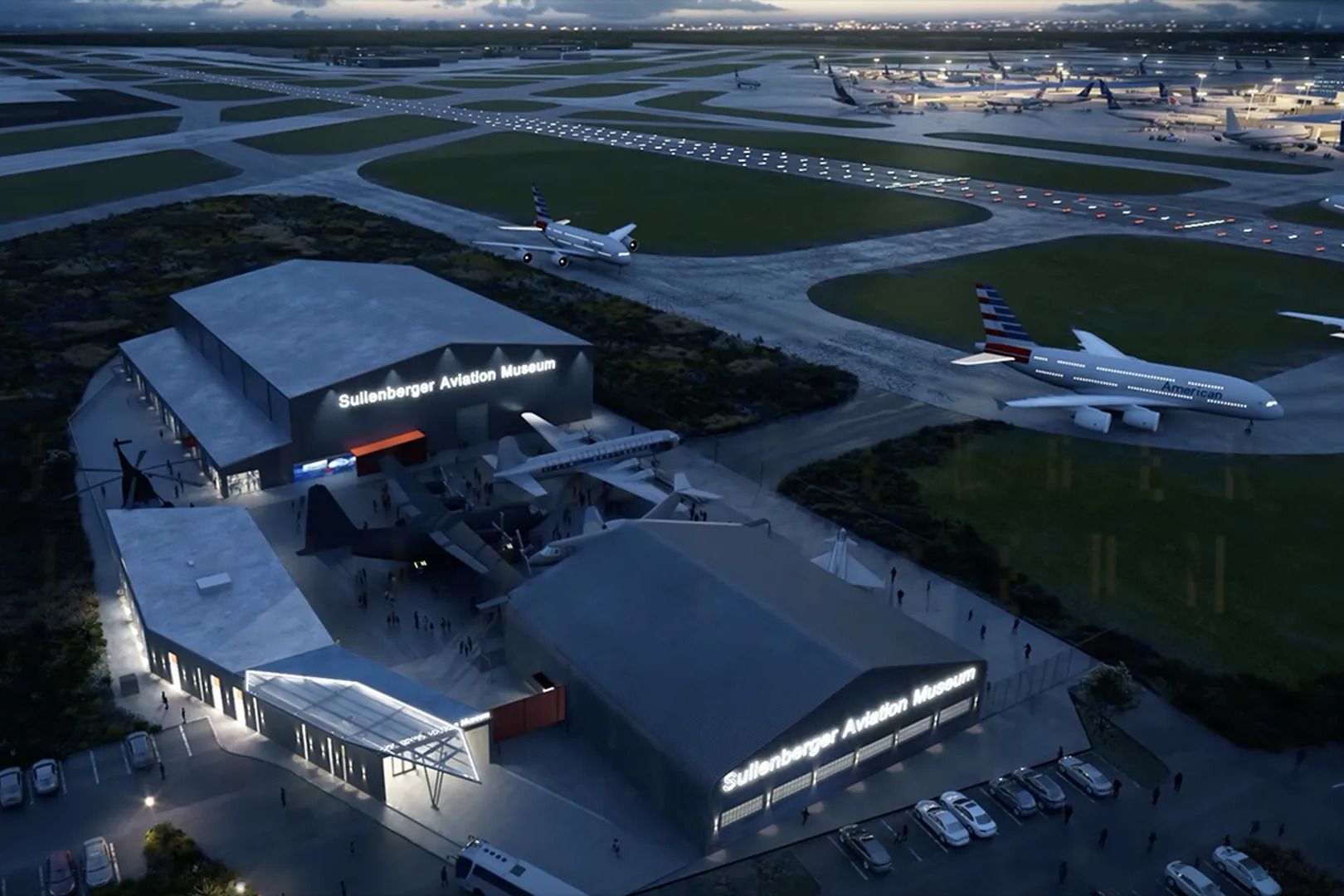
Related
Miracle On The Hudson Captain Sullenberger Aviation Museum Opens In June
The Carolinas Aviation Museum is reopening with a new name next to Charlotte Airport this summer.
The airport is an economic powerhouse for the region, offering direct flights to almost 200 locations. When asked by Simple Flying about the state’s record summer for aviation, North Carolina Governor Roy Cooper highlighted just how significant these flights are:
“The number of flights in and out of a place are critical, particularly if they are nonstop. That makes a big difference. So working with PTI, RDU, and Charlotte Douglas, there has been an effort to push more and more available flights because we do live in an international economy. These companies want to be able to get from one place to the next, so a quality airport is important, and that’s part and parcel of our economic development.”
Not to be outdone, Raleigh-Durham International Airport (RDU), which serves the state capital and the Raleigh, Durham, Chapel Hill “Research Triangle,” just welcomed its 10th international carrier (compared to CLT’s four). This summer alone, RDU has welcomed Lufthansa with flights to Frankfurt (FRA), COPA Airlines with a direct link to its Hub of the Americas in Panama (PTY), and Aeromexico with a link to Mexico City (MEX) as part of its Joint Cooperation Agreement with Delta Air Lines.
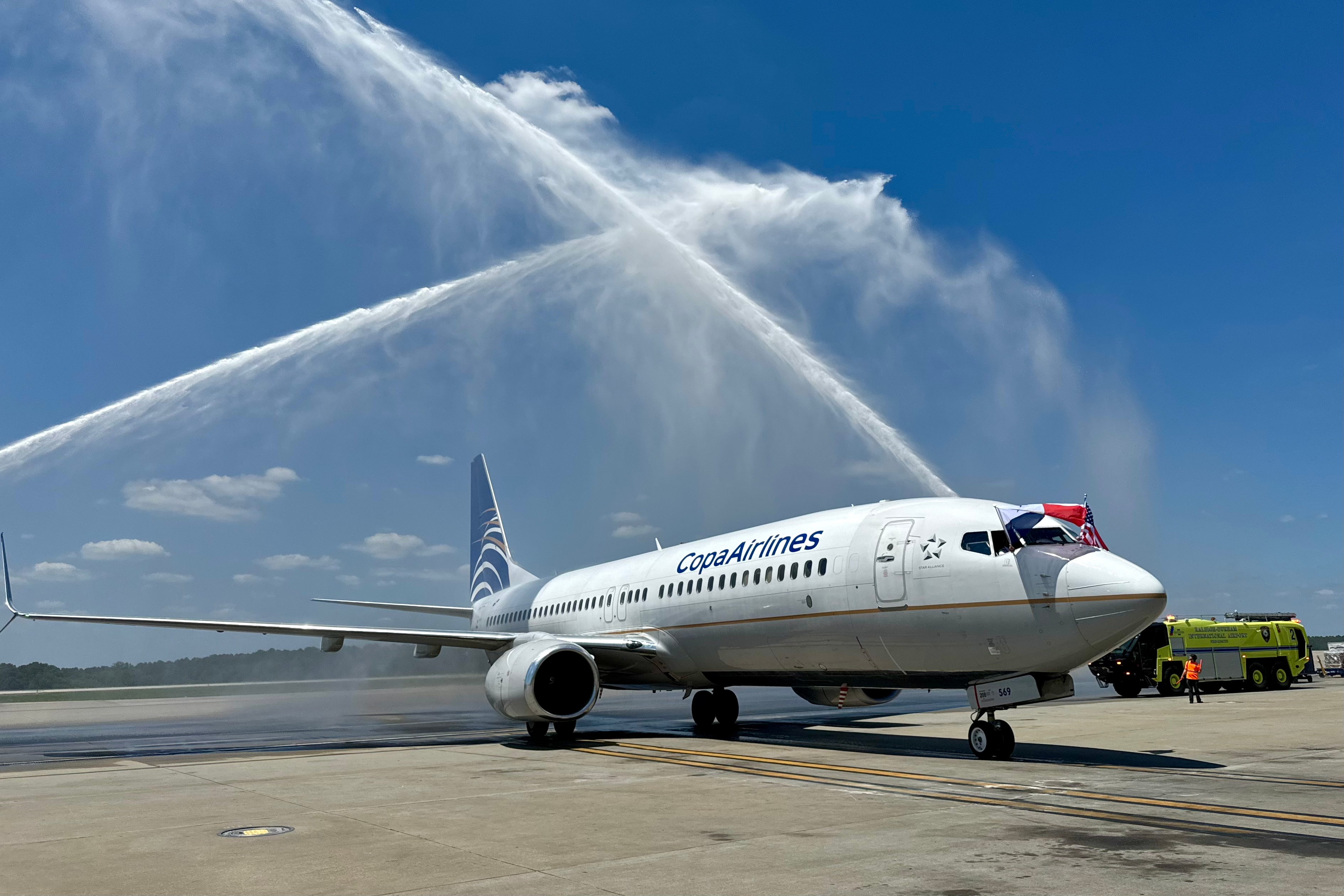
Related
Flight Review: Copa Airlines Boeing 737-800 Inaugural Service From Raleigh/Durham To Panama City
The first flight from North Carolina to the Hub of the Americas was pleasant and swift, with minimal wait times on both ends of the journey.
The airport is currently building a replacement for its 10,000-foot runway, which was built in the 1980s and needs to be replaced after more than four decades of use. It is the airport’s most significant capital project and will make way for the future expansion of Terminal 2. Speaking exclusively to Simple Flying, Michael Landguth, President and CEO of the Raleigh-Durham Airport Authority, noted just how significant this summer is for the airport:
“RDU is welcoming passengers in record numbers while adding new airlines and destinations that give them more travel options than ever before.
“This summer, we have increased access to Europe and Mexico with flights to Frankfurt and Mexico City and opened a new gateway to Central and South America with service to Panama City. We look forward to continuing to grow with our region and expanding business and leisure opportunities around the world.”
Photo: Jonathan E. Hendry | Simple Flying
Much like the other airports mentioned, RDU set passenger traffic records in 2024 for its busiest single day and busiest month. Last year, it ranked as the fastest-growing Top 50 airport in the country with a growth rate of 22%, beating out San Francisco International Airport, Washington-Dulles International Airport, and Puerto Rico’s Luis Muñoz Marín International Airport in San Juan for the top spot.


